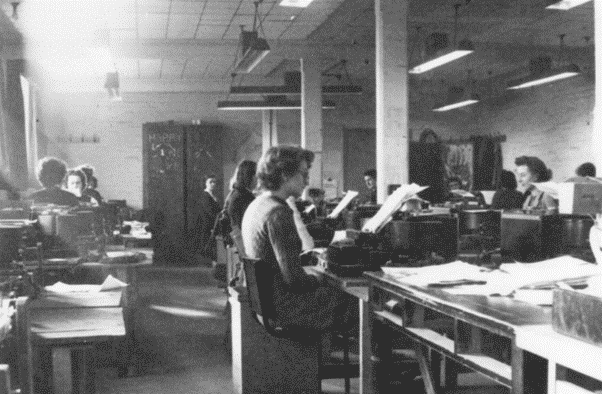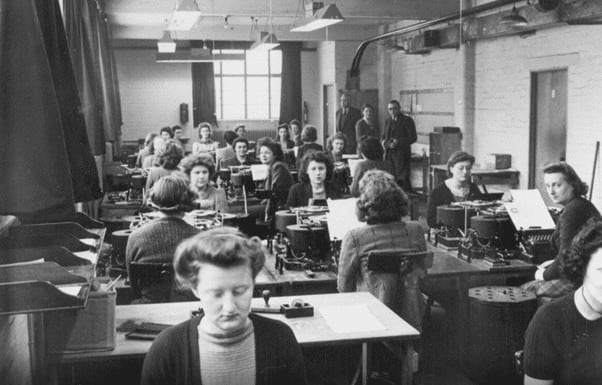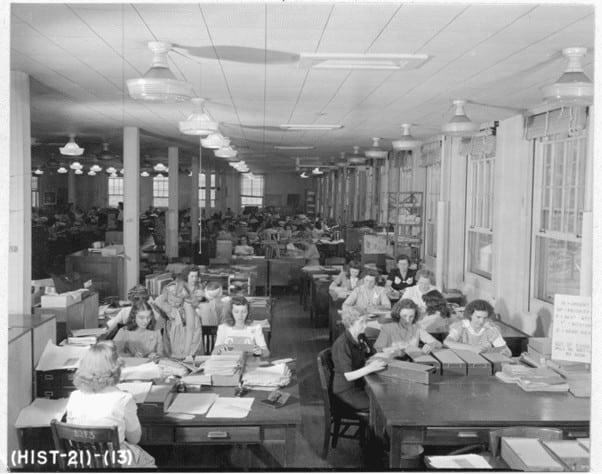Cryptography and Intelligence, in both times of war and peace, is oftentimes thought of as a man’s world. Particularly in areas of naval or military intelligence. The achievements of famous male cryptographers such as Alan Turing are household knowledge. However, women have long been a key component of cryptography efforts, both in the UK and the US.

So What?
Whilst often understudied, women in cryptography have given a lot to the development of the field. Due to secrecy, women working in cryptography have often not been able to share stories of their contributions. As a result, historians have focused on this relatively recently due to the declassification of war files.
Early Origins
Genevieve Hitt is likely the first-ever female cryptographer in the US. Born in 1885 in Texas as Genevieve Young, she married Captain Parker Hitt in 1911, who was stationed in the 22nd Infantry at Fort Sam, Houston. As a military wife, she often travelled with him. Between 1911 and 1917 she worked on a volunteer basis alongside her husband in breaking Mexican government codes. Her most notable work took place during the American Punitive Expedition in Mexico in 1916-17.
Parker Hitt left Fort Sill in 1917 to join the AEF (American Expeditionary Forces). However, Genevieve continued her voluntary cryptography work due to her aptitude in the role. In 1918 she was offered paid work as a cryptographer for the Southern Department of the AEF.
Hitt is a key example as she illustrates the way that women were first brought into the cryptography profession. Due to the need for secrecy, recruitment was focused on trusted women into cryptography. Therefore those with existing ties to the military were scouted. This led to many military wives or other family members of serving operatives were enlisted into cryptographic roles. This trend continued through World War two and much of the Cold War.
World War Two
World War Two produced significant developments in the field of cryptography. The breakout of WW2 meant that nations now had a vested interest in developing their cryptography capabilities. However, the army needed a large proportion of male workers for arms forces. At the time they did not accept female recruits. Similarly, there was societal pressure for men to join the war by doing active service rather than working in offices. The result was large numbers of women working in cryptography roles.
The UK
In the UK, there were many women working in cryptography, the most famous example being the women of Bletchley Park. Women made up over 63% of the workforce at Bletchley Park. They were largely focused on codebreaking Japanese and German messages. Ultimately, women working on cryptography in Bletchley Park are estimated to have shorted WW2 by up to four years, and saved millions of lives as a result.

The US
The same is true within the US. There were only 181 people working in cryptography in the US Army at the beginning of World War Two. However, at the peak of female employment by US military forces during WW2, there were more than 10,000 American women working in cryptography. This meant that almost 70% of the military cryptography force were females. These workers largely focused on codebreaking of Axis Powers encrypted messages to further naval and military intelligence.
In fact, the US learned of the end of World War Two due to US Army Intelligence intercepting a Japanese transmission agreeing to a surrender. It was in fact a woman, Virginia Aderhold, who worked to decipher this, and as such, she was the first person in the US to learn that the war had ended.
Cold War
Women continued to work in cryptography well after the conclusion of World War Two, though many did leave as there was less immediate need for cryptographers. The US military hub acquired Arlington Hall. That hub alone employed over 1,000 women to code break during the war. Arlington had previously been an all-female college.

Img; Women working in Arlington Hall on codebreaking in late 1945; via the NSA)
Following the conclusion of the war, the National Security Agency remained at Arlington Hall until the construction of the new NSA headquarters in the 1960s, with many women still being employed. Most notably, women that had been trained extensively in cryptography at Arlington Hall went on to do vast and varied work during the cold war. Key examples include Dorothy Blum and Ann Caracristi, who both significantly changed the way the NSA used computers as part of cryptography. Both of these women went onto achieve supergrades in the NSA, showing their incredible contribution to the field.
Summary
Women in Cryptography have long been understudied yet have given a lot to the field. The vast numbers of women working in Cryptography, both in the US and the UK, were integral to war efforts as well as post-war operations. Women were instrumental to codebreaking, most famously in Bletchley Park. However, there is often fewer discussions on the innovation that women offered in the field of Cryptography. Women were not only into security and military agencies to do administrative tasks; they were and are also able to take on challenging codebreaking tasks to increase military intelligence.

